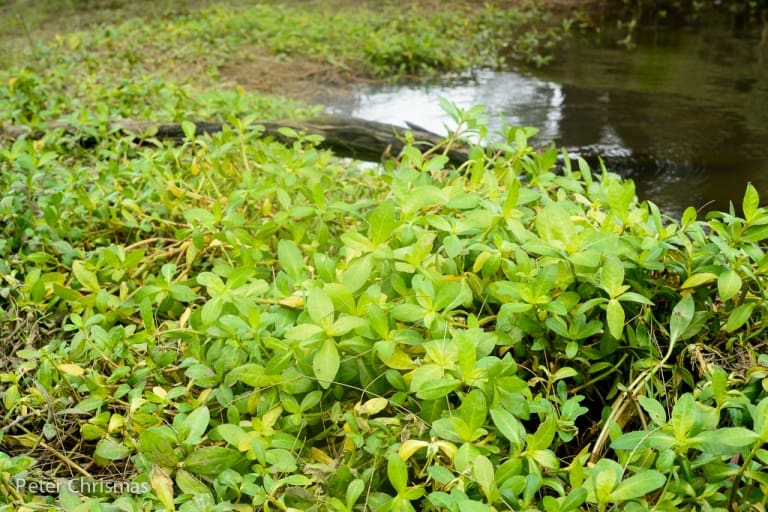Welcome to your guide on tackling one of the peskiest invaders in wetland ecosystems—Alligator Weed. In this article, you’ll discover the top 10 essential tools integral for efficiently managing and controlling this persistent plant. With these resources, you’ll be equipped to restore balance to your wetlands and ensure the health and sustainability of these vital habitats. Ready to dive in? Let’s explore the must-have tools to keep Alligator Weed at bay. Have you ever found yourself grappling with the challenges of controlling alligator weed in wetlands? If so, you’re not alone. This invasive species, native to South America, has become a significant problem for many wetland environments across the globe. Managing it effectively requires a strategic approach and the right tools.
Understanding Alligator Weed
Before diving into the tools, it’s crucial to understand what you’re dealing with. Alligator weed, or Alternanthera philoxeroides, is a highly invasive aquatic weed that thrives in wet, marshy conditions. It can quickly spread and crowd out native vegetation, disrupting ecosystems and creating significant ecological and economic impacts.
Importance of Managing Alligator Weed
You might be wondering why managing alligator weed is so critical. Here’s why:
- Ecosystem Balance: Alligator weed can choke the life out of native plants and animals, leading to biodiversity loss.
- Water Flow Disruption: It tends to clog waterways, which can affect water quality and availability.
- Economic Costs: Managing alligator weed can be costly, and if left unchecked, it can impact agriculture and fisheries.
Ensuring proper management helps protect wetland ecosystems and maintain their health and resilience.

1. Herbicides
What Are Herbicides?
Herbicides are chemical substances used to kill or inhibit the growth of plants. When battling alligator weed, using the right herbicide can be instrumental.
Types of Herbicides for Alligator Weed
Herbicides come in different types, and selecting the appropriate one is vital for efficacy and environmental safety. Popular herbicides for controlling alligator weed often include active ingredients like glyphosate or imazapyr.
| Herbicide Type | Active Ingredient | Application Method |
|---|---|---|
| Systemic | Glyphosate | Foliar spray |
| Contact | Diquat | Direct spray |
| Pre-emergent | Imazapyr | Soil treatment |
Each type has its specific application method and effectiveness depending on the growth stage of the alligator weed.
Application Tips
For successful herbicide application:
- Timing: Apply during the growing season when the weed is actively absorbing nutrients.
- Coverage: Ensure thorough coverage, especially for systemic herbicides, so that the plant absorbs the chemical efficiently.
- Safety: Follow all safety guidelines to protect yourself and the environment.
2. Physical Removal
Manual Removal
This approach involves physically uprooting the alligator weed. While labor-intensive, it can be effective for small infestations.
Mechanical Removal
For larger areas, mechanical tools such as aquatic weed harvesters or mowers can be employed. These tools cut and collect the weed, making it easier to manage larger infestations without the extensive use of chemicals.
Benefits and Challenges
| Benefits | Challenges |
|---|---|
| Immediate removal | Labor-intensive |
| No chemical use | Can be disruptive to soil and water |
| Suitable for small infestations | Not effective for large areas |

3. Biological Control
Introducing Natural Predators
Certain insects, such as the alligator weed flea beetle (Agasicles hygrophila), can be introduced to manage weed growth naturally. These insects feed on alligator weed, reducing its spread.
Benefits
- Eco-friendly: Minimal environmental impact compared to chemical treatments.
- Sustainable: Can provide long-term control as the natural predators establish and multiply.
Considerations
Biological control requires careful planning:
- Compatibility: Ensure the introduced species will not negatively impact native flora and fauna.
- Regulation: Check local regulations to avoid introducing another invasive species.
4. Water Level Management
Adjusting Water Levels
Alligator weed thrives in particular water conditions. By managing water levels, you can create an inhospitable environment for this invasive species.
Implementation
- Drawdown: Temporarily lower water levels to expose the weed to unfavorable conditions, leading to desiccation.
- Flooding: In some cases, periodic flooding can help control the spread of alligator weed by submerging and stressing the plants.
Benefits and Challenges
| Benefits | Challenges |
|---|---|
| Cost-effective | Needs precise control and monitoring |
| Reduces chemical use | May impact other aquatic life |
| Can be combined with other methods | Requires infrastructure |

5. Shade Management
Using Shade
Alligator weed requires sunlight for growth. By manipulating light availability, you can suppress its spread.
Techniques
- Planting Taller Species: Vegetation that shades out the alligator weed can reduce its growth.
- Physical Barriers: Installing shade cloth or other barriers can also be effective.
Pros and Cons
| Pros | Cons |
|---|---|
| Environmentally friendly | May affect other plants |
| Low maintenance | Not suitable for all landscapes |
| Can provide habitat for wildlife | Requires proper planning and placement |
6. Monitoring and Early Detection
Importance of Monitoring
Early detection allows for prompt action, preventing larger infestations and reducing overall management costs.
Tools for Monitoring
- Aerial Surveys: Drones or helicopters can cover large areas, offering a comprehensive view of weed presence.
- Satellites: Remote sensing technologies can provide detailed imagery to detect alligator weed distribution.
- Ground Surveys: Regular inspections by foot or boat ensure accurate identification.
Implementing a Monitoring Program
Establish a routine monitoring schedule and keep accurate records. This systematic approach helps in understanding the weed’s behavior and the effectiveness of control measures.

7. Integrated Pest Management (IPM)
What is IPM?
Integrated Pest Management is a holistic approach that combines multiple control methods for more effective and sustainable management.
Components of IPM for Alligator Weed
| Component | Description |
|---|---|
| Prevention | Implement measures to avoid infestations |
| Cultural | Modify the environment to suppress weed |
| Mechanical | Use physical tools and methods |
| Biological | Introduce natural predators |
| Chemical | Apply herbicides as a last resort |
Benefits of IPM
- Comprehensive: Utilizes multiple tactics for greater effectiveness.
- Sustainable: Emphasizes long-term solutions and minimal environmental impact.
- Flexible: Adaptable to various situations and changes in weed behavior.
8. Public Awareness and Education
Raising Awareness
Educating the public about alligator weed and its impacts can foster community involvement and support for management efforts.
Outreach Programs
- Community Workshops: Engage residents in identifying and managing alligator weed.
- Informational Campaigns: Use flyers, social media, and local media to spread awareness.
- Volunteer Programs: Encourage community participation in monitoring and removal activities.
Benefits
Informed and engaged communities are more likely to support management initiatives and assist in monitoring and reporting new infestations.

9. Funding and Resources
Securing Funding
Managing alligator weed can be resource-intensive. Securing adequate funding ensures that control measures are sustained over the long term.
Potential Funding Sources
- Government Grants: Many governments offer funds for environmental management projects.
- Nonprofits and NGOs: Organizations dedicated to habitat conservation might provide financial support.
- Private Sector: Businesses, particularly those reliant on wetland resources, may contribute to management efforts.
Efficient Resource Allocation
Efficiently allocate resources by prioritizing areas with severe infestations and integrating cost-effective management strategies.
10. Policy and Regulation
Importance of Regulation
Effective policy and regulation are crucial for managing invasive species. They provide a framework for action and ensure consistency in management practices.
Key Regulations
- Permit Requirements: Understand local regulations regarding herbicide use, water management, and species introduction.
- Monitoring and Reporting: Comply with regulations mandating regular monitoring and reporting of weed presence and control efforts.
Working with Authorities
Collaborate with local, regional, and national authorities to align efforts and leverage resources. Regulatory support can enhance compliance and effectiveness in alligator weed management.
Conclusion
Managing alligator weed in wetlands is no small feat. It requires a strategic combination of different tools and methods, an understanding of the weed’s biology, and a commitment to ongoing monitoring and adaptation. By employing these ten essential tools—from chemical and physical methods to biological control and raising public awareness—you can make significant strides in controlling this invasive species. Remember, persistence and a well-rounded approach are key to protecting and preserving the delicate balance of wetland ecosystems. Dive in and equip yourself with these essential tools, and you’ll be well on your way to managing alligator weed more effectively.
